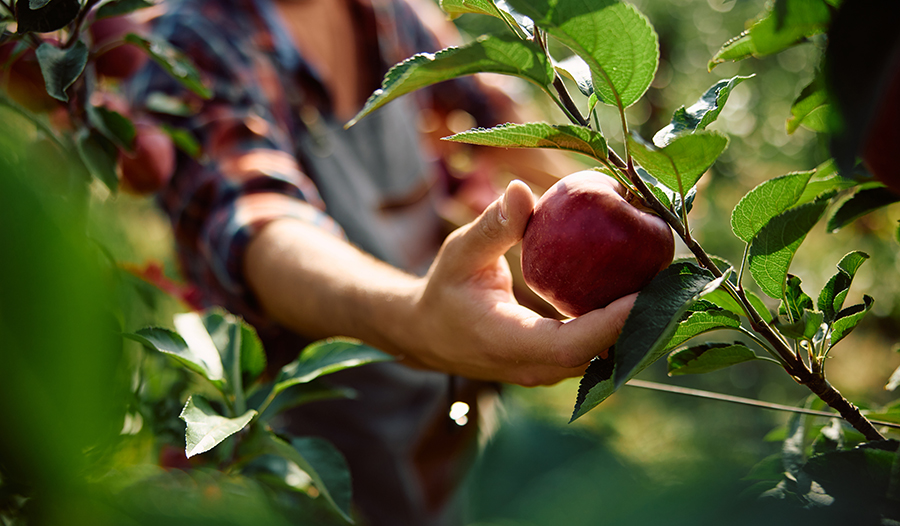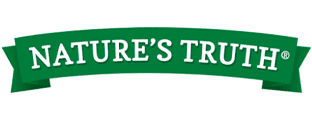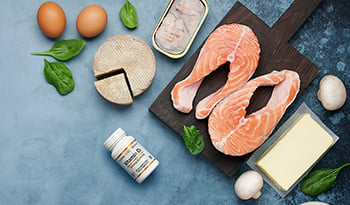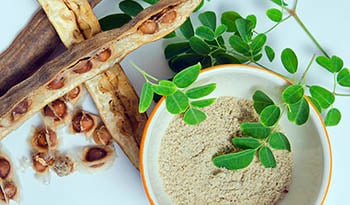The Health Benefits of Apples

Apples were introduced to Americans by the Pilgrims in Massachusetts Bay Colony, and today there are around 2,500 varieties of apple trees in the US—100 of which are commercially grown. Only the crabapple is native to the US.
The popularity of the apple—whether it is Red Delicious, Gala, Granny Smith, Honeycrisp, Fuji, or Golden Delicious—is clear: The USDA (The United States Department of Agriculture) estimates the average American eats around 26 pounds a year!
That’s great news because apples contain amazing health benefits along with their intriguing flavors, from sweet to tangy and tart.
Nutritional Profile of Apples
The skin of an apple is super loaded with nutrients: A raw apple with skin delivers up to 332% more vitamin K, 142% more vitamin A, and 115% more vitamin C than a peeled apple.
My father grew up on a small farm that grew apples and he would eat the fruit, peel and all, from the blossom end. Opposite the stem, it’s where the flower is attached before the apple forms. He said this gave him more nutrients from the core and less waste.
The Top Health Benefits of Apples
Fight Chronic Disease
A medium-sized apple also delivers almost 4.5 grams of soluble and insoluble fiber (16% of the daily value). The soluble fiber promotes gut health and along with the insoluble fiber, it can help regulate your blood sugar, protect heart health, and reduce your appetite, promoting weight loss.
Reduce Inflammation
Apples also provide a good dose of inflammation-fighting antioxidants, especially the flavonoid1 quercetin. It can help lower blood pressure, reduce the risk of heart disease, help relieve allergy symptoms, strengthen your immune system, and reduce the risk of chronic disease. Supplement doses of 500mg to 1,000m a day are standard.
Boost Vitamins and Minerals
There’s a wide variety of vitamins in the flesh and skin. My favorites are vitamin C, which is essential for immune function and skin health; B6, with all its benefits for brain health, and blood sugar regulation; and vitamin E, which promotes the health of your brain, blood, and skin.
There are also many minerals and trace minerals, including calcium, nitrogen, magnesium, zinc, iron, copper, and manganese, that are important for everything from healthy immune function to blood sugar regulation.
Supplements
- Fiber Supplements: Psyllium husk or inulin supplements are great options for those who want to increase their fiber intake, providing a similar benefit to the fiber found in apples.
- Quercetin Supplements: Quercetin is a powerful antioxidant, and supplementing with it can provide health benefits similar to those found in apples.
- Vitamin C Supplements: Vitamin C, found in apples, is known for its immune-boosting effects and its ability to support skin health.
- Polyphenol Supplements: Polyphenol extract supplements provide a concentrated source of antioxidants, helping to protect cells from oxidative stress and support overall health.
Taking A Bite Out Of Other Fall Fruits
You can also get a great health boost from pumpkins (yes, it’s a fruit) and pears.
- One cup of pumpkin contains 245% of the Reference Daily Intake (RDI) for vitamin A, 16% RDI for potassium. 19% for vitamin C, and 11% for B2, copper, and manganese, plus a good dose of fiber and iron.
- Pears—especially the red ones—are loaded with anti-inflammatory antioxidants like anthocyanin that can lower your risk of heart disease and stroke, and lower your risk for type 2 diabetes.2,3
References:
- Jeanelle Boyer and Rui Hai Liu. Apple phytochemicals and their health benefits. Nutr J. 2004; 3: 5. Published online 2004 May 12. doi: 10.1186/1475-2891-3-5
- Nicole M Wedick , An Pan, Aedín Cassidy, Eric B Rimm, Laura Sampson, Bernard Rosner, Walter Willett, Frank B Hu, Qi Sun, Rob M van Dam. Dietary flavonoid intakes and risk of type 2 diabetes in US men and women. Am J Clin Nutr. 2012 Apr;95(4):925-33. doi: 10.3945/ajcn.111.028894. Epub 2012 Feb 22.
- Aleksandra Kozłowska and Aneta Nitsch-Osuch. Anthocyanins and Type 2 Diabetes: An Update of Human Study and Clinical Trial. Nutrients. 2024 Jun; 16(11): 1674. Published online 2024 May 29. doi: 10.3390/nu16111674
- Margarethe E Goetz, Suzanne E Judd, Monika M Safford, et al. Dietary flavonoid intake and incident coronary heart disease: the Reasons for Geographic and Racial Differences in Stroke (REGARDS) study. Am J Clin Nutr. 2016 Nov; 104(5): 1236–1244. Published online 2016 Sep 21. doi: 10.3945/ajcn.115.129452
DISCLAIMER:This Wellness Hub does not intend to provide diagnosis...

































 Table of Contents
Table of Contents















